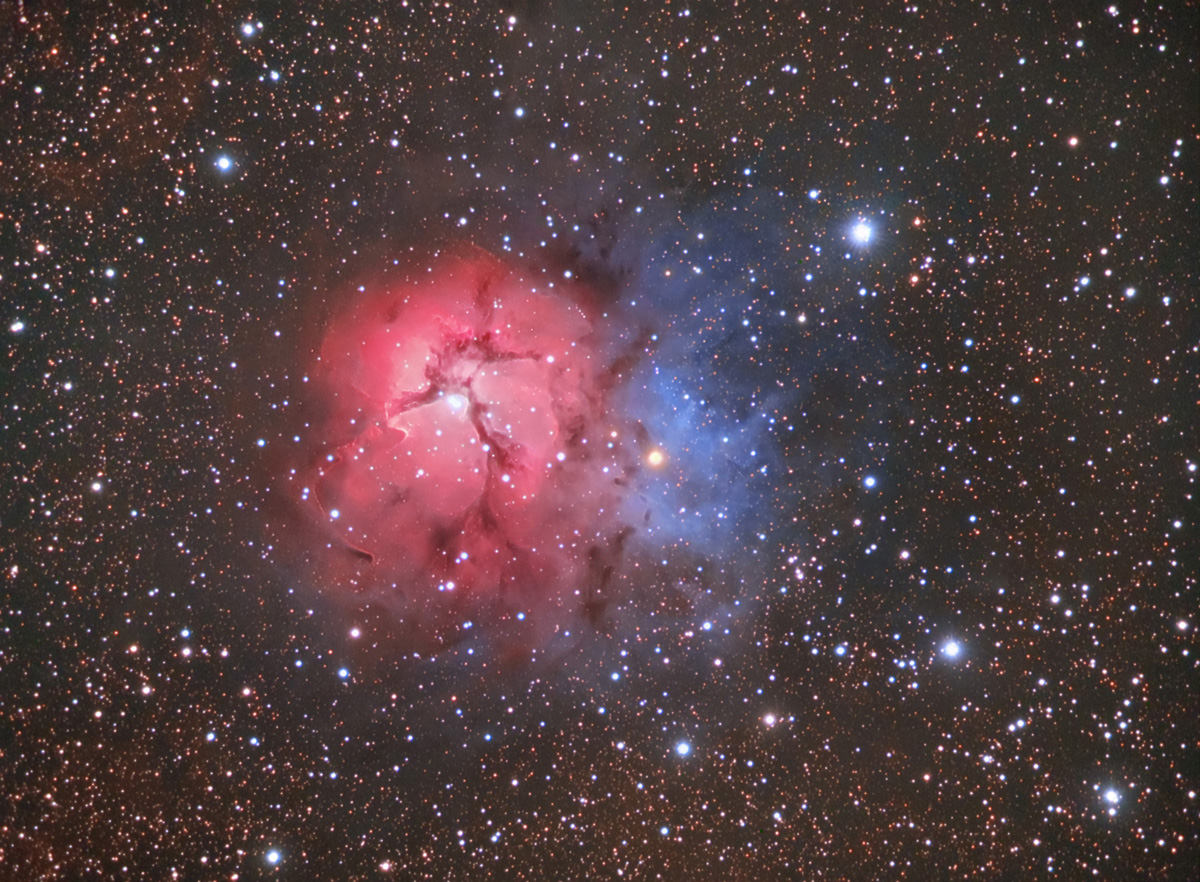
| HOME |
M20 THE TRIFID NEBULA
EMISSION AND REFLECTION NEBULA IN SAGITTARIUS
(ra: 18:02 23 / dec -23:01,48)
Click on the image for a higher resolution version
JULY 2010, Mercedes Observatory Buenos Aires, Argentina
DATA
TYPE: Emission, Reflection and Dark Nebula
VISUAL BRIGHTNESS: 9
SIZE: 29 x 27 arcs minutes
DISTANCE: between 2200 and 6000 light years
IMAGE INFORMATION
SCOPE: Celestron SCT working at f6.3 (roughly)
CAMERA: QSI 583 WS
GUIDING: Starlight Xpress Lodestar - William Optic 66 f6
IMAGE ACQUISITION: Maxim DL
FILTERS: Astronomik LRGB Type II
SKY CONDITIONS: transparency good and seeing regular
EXPOSURES: LRGB (45,15,15,30) Luminance bin 1x1. RGB bin 2x2
PROCESSING: Median Combine in Images Plus, CCD Sharp, Photoshop CS2
OBJECT DESCRIPTION AND IMAGE SESSION
M20 is one of the attractions of the southern winter sky. It can be easily seen with 7x50 binoculars even in relatively light polluted skies. Its name came out of the reddish three lobed appearance which are ionized from the central star HN 40, a sextuple star system. Charles messier described it as a cluster of stars of 8 to 9 magnitude surrounded by nebulosity in 1764.
M20 is a unique combination of an open cluster of stars, an emission nebula (the lower, red portion), a reflection nebula (the upper, blue portion) and a dark nebula (the apparent 'gaps' within the emission nebula that cause the Trifid appearance; these are also designated Barnard 85). of three type of nebulosity if we also consider some dark nebula patches.